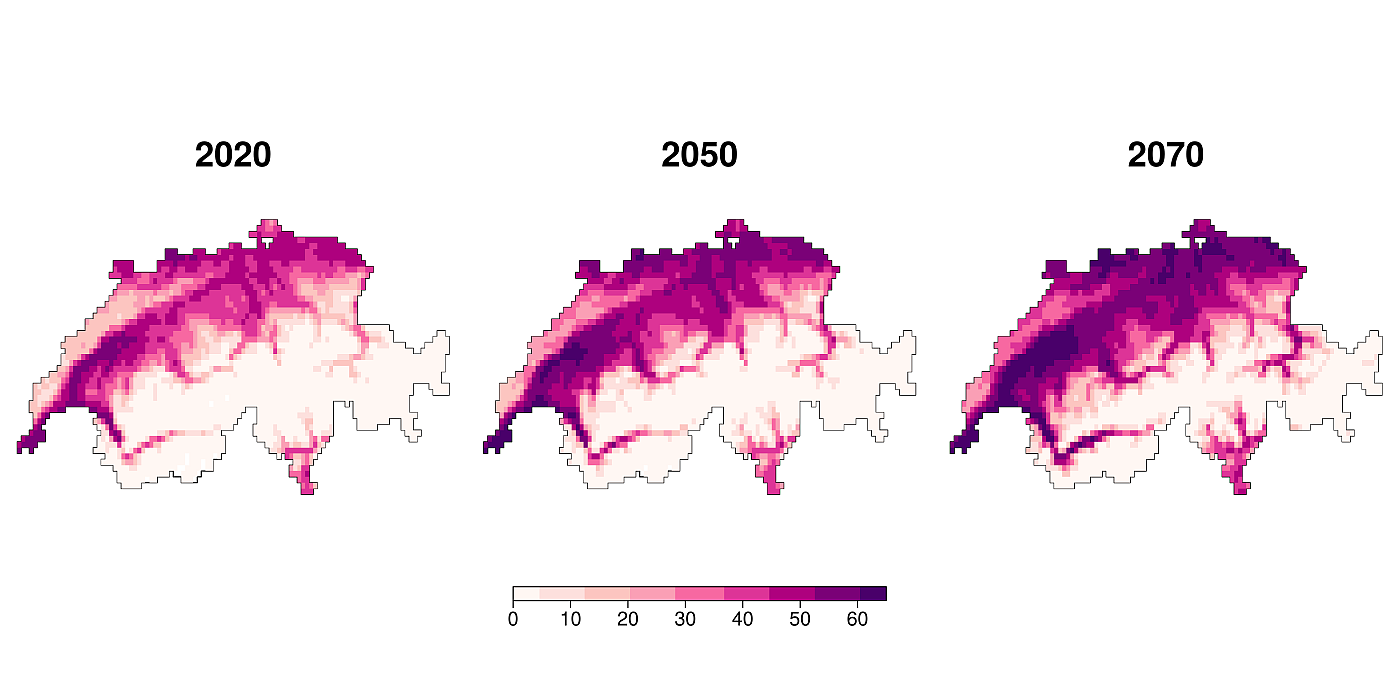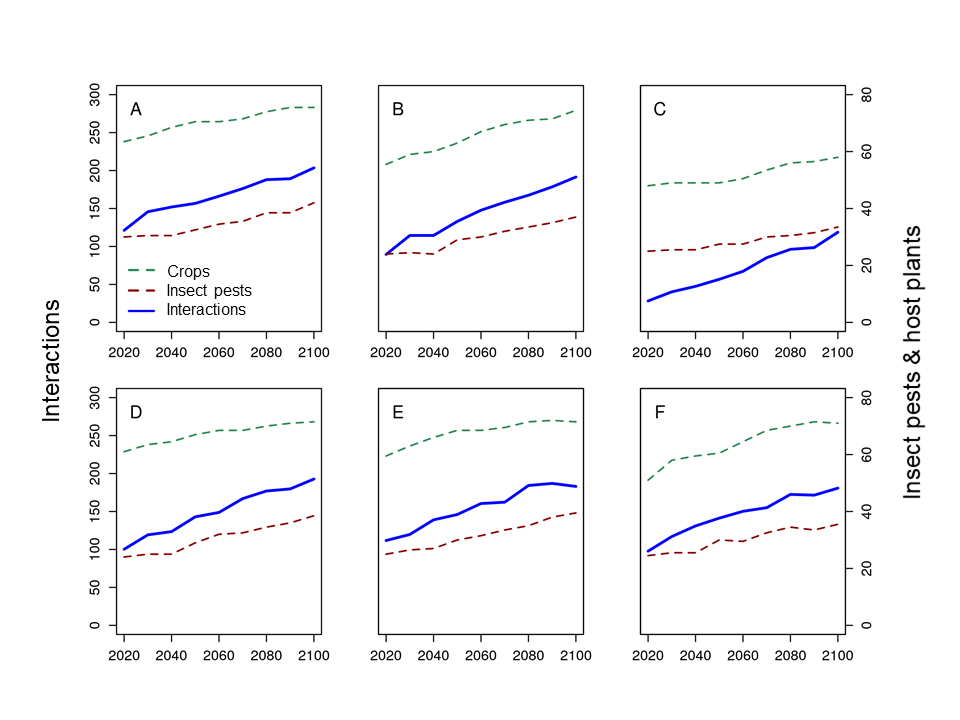The potential spread of non-indigenous, potentially invasive insect pests under current and future climate conditions was examined for 64 species of agricultural insect pests figuring on a list of quarantine organisms compiled by the European Plant Protection Organisation (EPPO) (Grünig et al. 2020a). Species distribution models (SDMs) (Guisan & Zimmermann, 2000) were used for the calculations. According to these models, the potential ranges of many of these quarantine organisms in Europe are expanding dramatically. The study of Grünig et al. (2020a) shows that the present climate is already suited to the establishment of many of these invasive species, particularly in southern and western regions of Europe. As temperatures rise, the potential ranges of the insect pests within Europe will expand northeastwards. According to the models, 30 of the examined species would already find a suitable climate in Switzerland; 12 more would be added to this list by the end of the century. With the passage of time, the ranges of the investigated species will also include higher altitudes (Fig. 1).
Invasive Insect Pests under Climate Change: Increasing Climatic Suitability and Host-Plant Availability
The occurrence of new insect pests does not, however, depend on the climate alone, but also on the availability of host plants (Bacon et al., 2012). For this reason, SDMs were also developed for a list of 96 crops which serve as host plants for the insect pests studied. These SDMs show that climate change is also causing the northward expansion of the potential ranges of the crops, which in future will also lead to new cultivation opportunities for valuable crops which are currently rarely grown, or only grown as niche products. Switzerland is also benefitting from this trend. Of the 96 crops examined, 57 currently find a suitable climate in Switzerland, with 15 more due to join their ranks by the end of the century. As climate change progresses, the favoured habitats of the host plants will also expand upwards (Fig. 2).
At the same time, however, the cultivation of new crops also implies the risk of new insect pests. As a network analysis by Grünig et al. (2020a) showed (Fig. 3), the number of overlaps of insect pests with their host plants increases along with climate change. Regions where insect pests can come across their host plants have a high risk of invasion. Bearing in mind the climate scenarios, it was shown that the area of the regions where these overlaps are possible is also growing. This means that the regions with an increased risk of invasion are growing. For the various regions of Switzerland, the network analysis shows that the number of feasible interactions could rise from 121 (at present) to 204 (by 2100). With up to 102 new interactions by 2100, the Alps would be particularly affected.
Rapid Rise in Pest Pressure after Temperatures in Coldest Month of Year Exceed 0 C
A second study (Grünig et al., 2020b) examined the climate niches of quarantine organisms and local, already established insect pests. Niches were defined in terms of the minimum temperature of the coldest month. Insects are ectothermic organisms, and thus dependent on the outside temperature. For this reason, the minimum temperature is especially relevant for surviving the winter. The results show that rather than being evenly distributed along the temperature gradients, climate niches fall into two groups: those of species which undergo diapause in order to survive the winter, and those of species that lack strategies for overwintering. In terms of the minimum temperature of the coldest month, the upper limit of the first group is -6° C, whilst the lower limit of the second group is 0 °C. Consequently, most of the species in this second group were previously only to be found in southern Europe and the maritime-influenced countries of western Europe, or have not yet become established in Europe. These species are as yet seldom found in Switzerland, since fairly long cold periods prevail in many places in winter, and the monthly average minimum temperature falls below 0 °C. In future, however, especially in lower-lying regions such as the Swiss Central Plateau and Ticino, temperatures will lie above the 0°C threshold. This means that new insect pests will be able to establish themselves in these regions, and hence a rapid increase in pest pressure must be expected (Fig. 4).
Additional Information
Literature
Bacon, S. J., Aebi, A., Calanca, P., & Bacher, S. (2014). Quarantine arthropod invasions in Europe: the role of climate, hosts and propagule pressure. Diversity and distributions, 20(1), 84-94. https://doi.org/10.1111/ddi.12149
Grünig, M., Mazzi, D., Calanca, P., Karger, D. N., & Pellissier, L. (2020). Crop and forest pest metawebs shift towards increased linkage and suitability overlap under climate change. Communications biology, 3(1), 1-10. https://doi.org/10.1038/s42003-020-0962-9
Grünig, M., Calanca, P., Mazzi, D., & Pellissier, L. (2020). Inflection point in climatic suitability of insect pest species in Europe suggests non‐linear responses to climate change. Global Change Biology. https://doi.org/10.1111/gcb.15313
Guisan, A., & Zimmermann, N. E. (2000). Predictive habitat distribution models in ecology. Ecological modelling, 135(2-3), 147-186. https://doi.org/10.1016/S0304-3800(00)00354-9
Last modification 09.09.2022
Contact
Agroscope
Agroecology and Environment
Climate and Agriculture Group
Agroscope
Plant Protection
Phytopathology and Zoology / Fruit and Vegetable Production Group
ETH Zurich
Landscape Ecology













